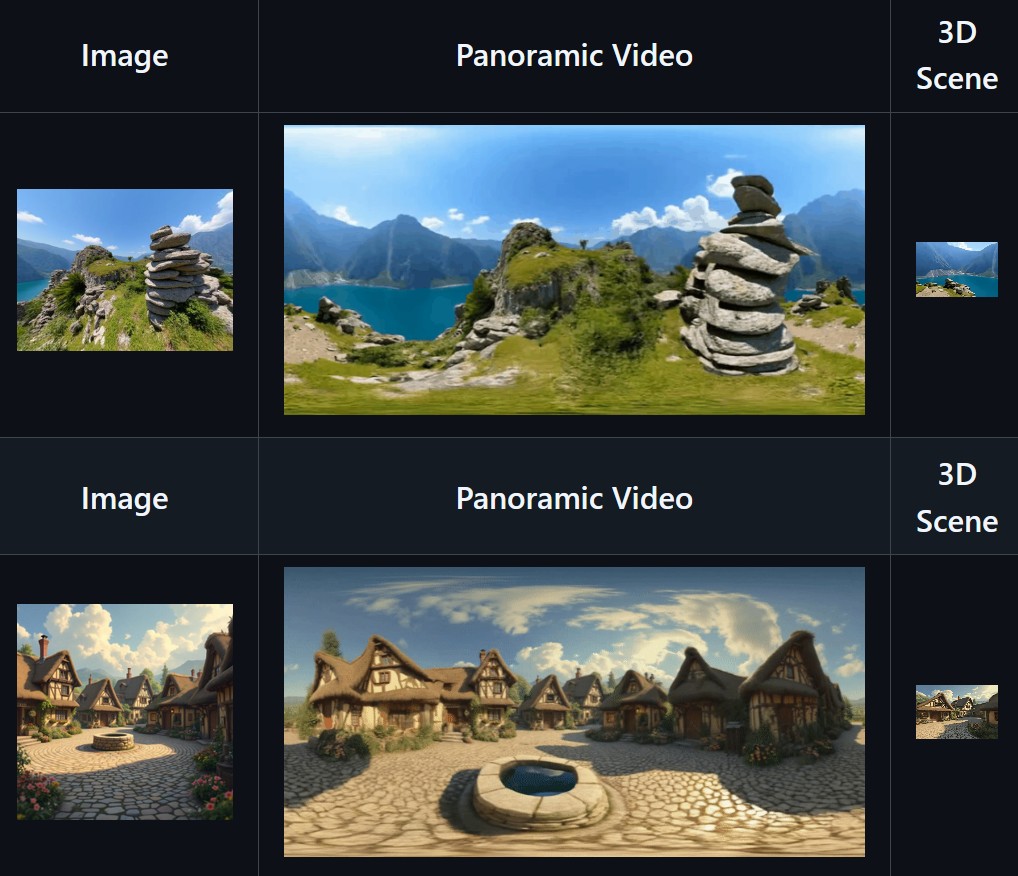BREAKING NEWS
LATEST POSTS
-
How to Create and Sell Profitable Online Courses: Step-by-Step Guide
https://www.learnworlds.com/how-to-create-an-online-course/
-
-
- Step 3. Understand your Audience
- Step 4. Write Down Your Learning Objectives
- Step 5. Create a Storyboard
- Step 6. Decide Where You’ll Host Your Online Course
- Step 7. Create Your Content
- Step 8. Select a Business Model
- Step 9. Create a Course Page that Converts
- Step 10. Build a Course Sales Funnel
- Step 11. Engage in Ongoing Marketing
-
-
-
Pika.art – an AI for creating videos from stills
“It converts simple text instructions into captivating videos, in seconds.
The story behind this AI is fascinating: A team of four engineers, led by Demi Guo and Chenlin Meng, was born with a clear vision: to transform video creation.
After raising $55 million, Pika Labs initially focused on Japanese anime-style animations before expanding into 3D animation” -
DiffusionLight: HDRI Light Probes for Free by Painting a Chrome Ball
https://diffusionlight.github.io/
https://github.com/DiffusionLight/DiffusionLight
https://github.com/DiffusionLight/DiffusionLight?tab=MIT-1-ov-file#readme
https://colab.research.google.com/drive/15pC4qb9mEtRYsW3utXkk-jnaeVxUy-0S
“a simple yet effective technique to estimate lighting in a single input image. Current techniques rely heavily on HDR panorama datasets to train neural networks to regress an input with limited field-of-view to a full environment map. However, these approaches often struggle with real-world, uncontrolled settings due to the limited diversity and size of their datasets. To address this problem, we leverage diffusion models trained on billions of standard images to render a chrome ball into the input image. Despite its simplicity, this task remains challenging: the diffusion models often insert incorrect or inconsistent objects and cannot readily generate images in HDR format. Our research uncovers a surprising relationship between the appearance of chrome balls and the initial diffusion noise map, which we utilize to consistently generate high-quality chrome balls. We further fine-tune an LDR difusion model (Stable Diffusion XL) with LoRA, enabling it to perform exposure bracketing for HDR light estimation. Our method produces convincing light estimates across diverse settings and demonstrates superior generalization to in-the-wild scenarios.”

-
Lance LeFort – The Decline of After-Hours Company Events: Unraveling the Shift in Employee Participation and Retention Strategies
The Critical Question: How Are Companies Responding?
- Long-Term Retention Strategies
- Flexible Work Arrangements
- Tailored Employee Benefits
- Revitalizing In-House Socialization
- Regular Feedback and Recognition:
FEATURED POSTS
-
Christopher Butler – Understanding the Eye-Mind Connection – Vision is a mental process
https://www.chrbutler.com/understanding-the-eye-mind-connection
The intricate relationship between the eyes and the brain, often termed the eye-mind connection, reveals that vision is predominantly a cognitive process. This understanding has profound implications for fields such as design, where capturing and maintaining attention is paramount. This essay delves into the nuances of visual perception, the brain’s role in interpreting visual data, and how this knowledge can be applied to effective design strategies.
This cognitive aspect of vision is evident in phenomena such as optical illusions, where the brain interprets visual information in a way that contradicts physical reality. These illusions underscore that what we “see” is not merely a direct recording of the external world but a constructed experience shaped by cognitive processes.
Understanding the cognitive nature of vision is crucial for effective design. Designers must consider how the brain processes visual information to create compelling and engaging visuals. This involves several key principles:
- Attention and Engagement
- Visual Hierarchy
- Cognitive Load Management
- Context and Meaning
-
SkyworkAI Matrix-3D – Omnidirectional Explorable 3D World Generation
https://github.com/SkyworkAI/Matrix-3D
Matrix-3D utilizes panoramic representation for wide-coverage omnidirectional explorable 3D world generation that combines conditional video generation and panoramic 3D reconstruction.
- Large-Scale Scene Generation : Compared to existing scene generation approaches, Matrix-3D supports the generation of broader, more expansive scenes that allow for complete 360-degree free exploration.
- High Controllability : Matrix-3D supports both text and image inputs, with customizable trajectories and infinite extensibility.
- Strong Generalization Capability : Built upon self-developed 3D data and video model priors, Matrix-3D enables the generation of diverse and high-quality 3D scenes.
- Speed-Quality Balance: Two types of panoramic 3D reconstruction methods are proposed to achieve rapid and detailed 3D reconstruction respectively.

-
LasVegas’ Sphere and the Big Sky Camera
https://theasc.com/articles/sphere-and-the-big-sky-camera
Sphere is a 516′-wide, 366′-tall geodesic dome that houses the world’s highest-resolution screen: a 160,000-square-foot LED wraparound that fills the peripheral vision for 17,600 spectators (20,000 if standing-room areas are included). The curved screen is a 9mm-pixel-pitch, sonically transparent surface of LED panels with 500-nit brightness that produce a high-dynamic-range experience. The audience sits 160′ to 400′ from the screen in theatrical seating, and the screen provides a 155-degree diagonal field of view and a more-than-140-degree vertical field of view.
The image on the screen is 16K (16,384×16,384) driven by 25 synchronized 4K video servers.
https://nofilmschool.com/darren-aronofsky-sphere-camera
Cross section:
-
Debayer – A free command line tool to convert camera raw images into scene-linear exr

https://github.com/jedypod/debayer
The only required dependency is oiiotool. However other “debayer engines” are also supported.
- OpenImageIO – oiiotool is used for converting debayered tif images to exr.
- Debayer Engines
- RawTherapee – Powerful raw development software used to decode raw images. High quality, good selection of debayer algorithms, and more advanced raw processing like chromatic aberration removal.
- LibRaw – dcraw_emu commandline utility included with LibRaw. Optional alternative for debayer. Simple, fast and effective.
- Darktable – Uses darktable-cli plus an xmp config to process.
- vkdt – uses vkdt-cli to debayer. Pretty experimental still. Uses Vulkan for image processing. Stupidly fast. Pretty limited.




